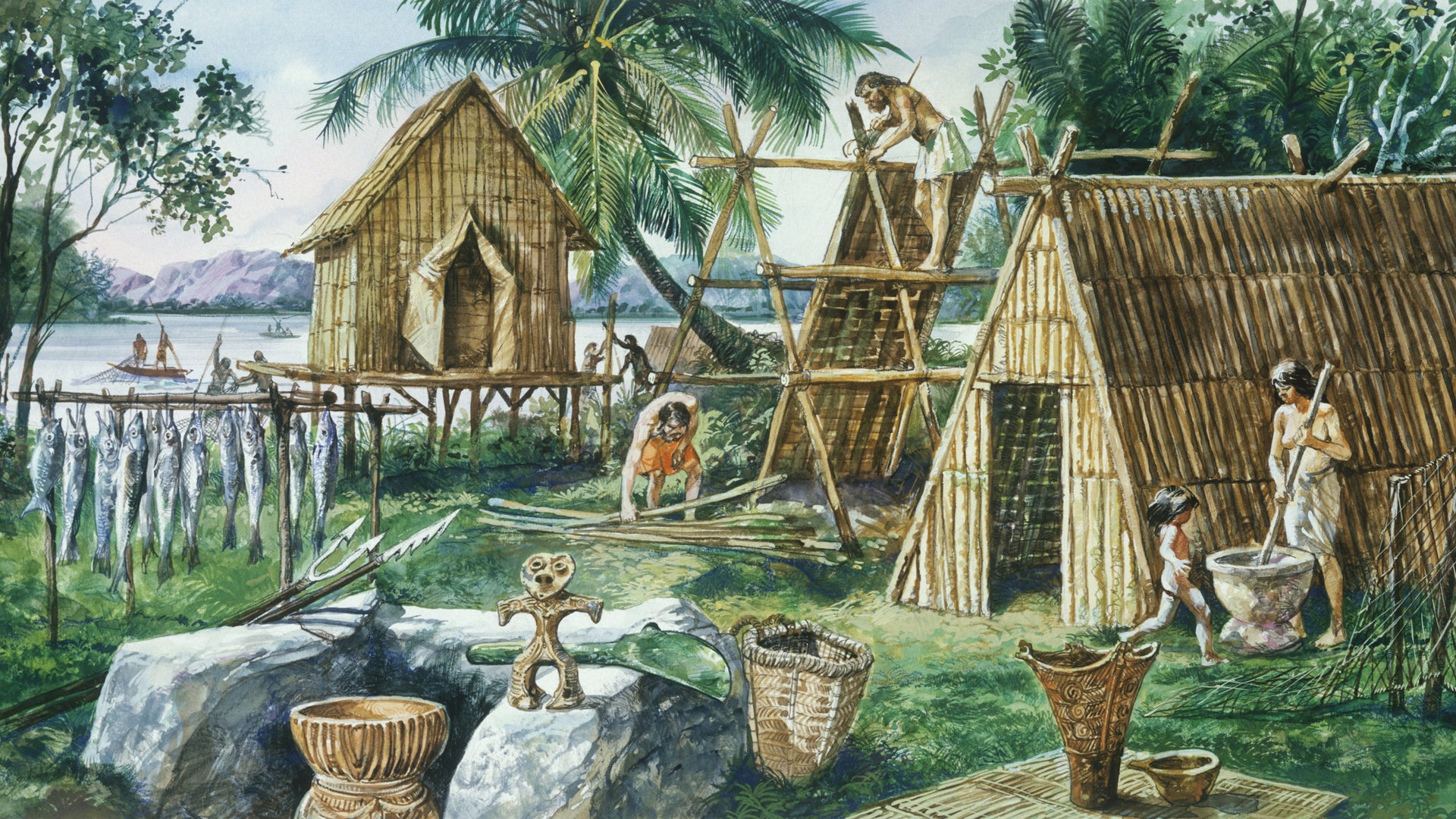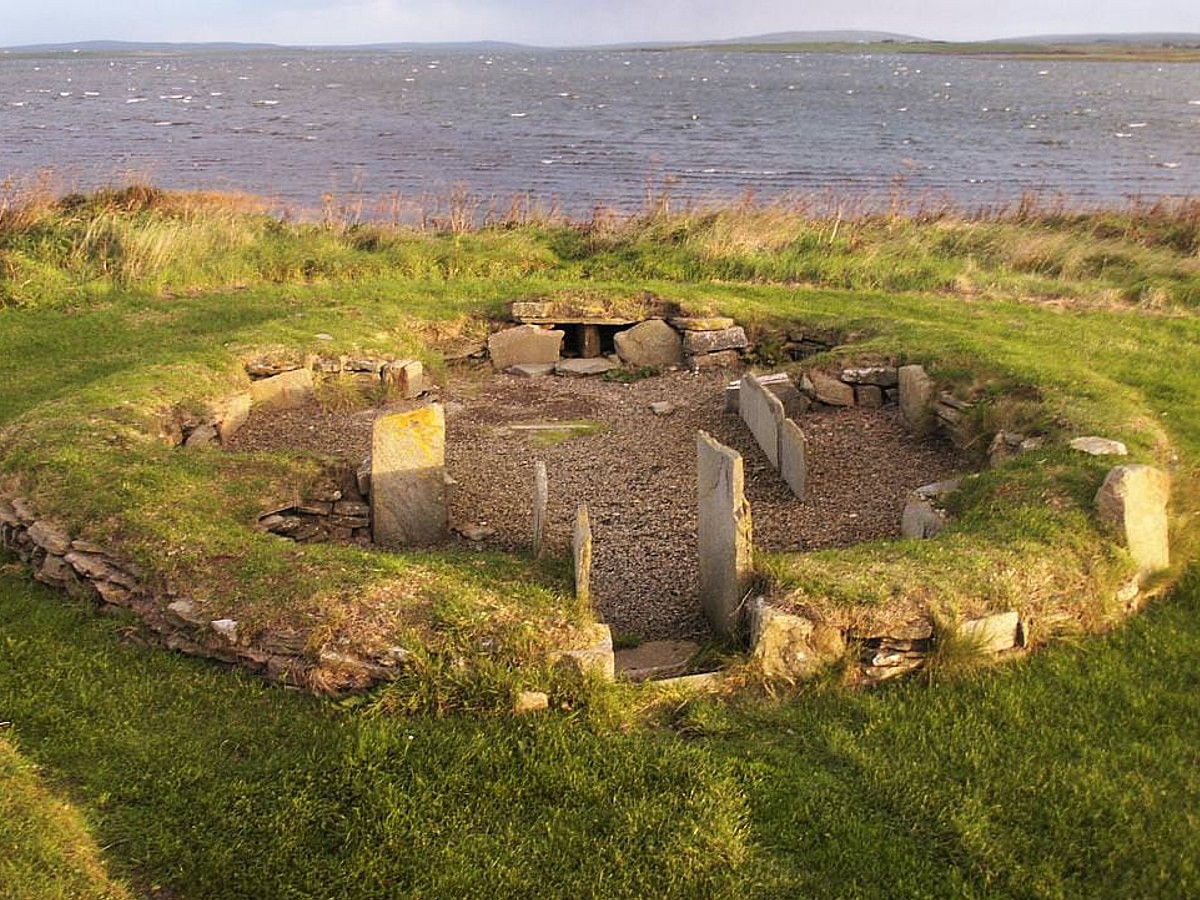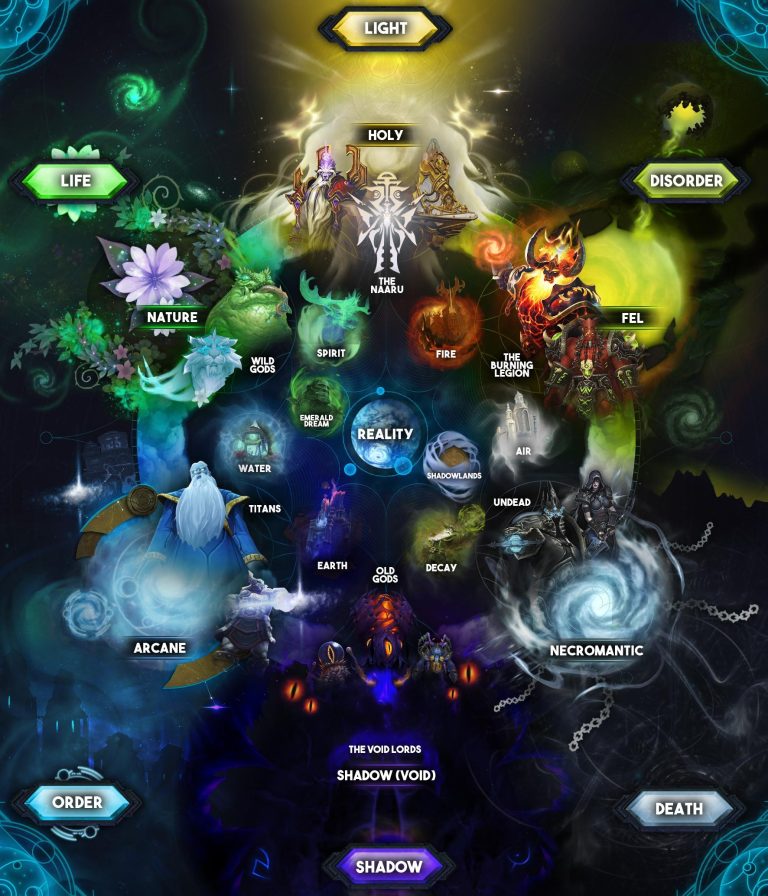An Early Neolithic Settlement World History
The Early Neolithic period of world history began around 10,000 BC and saw the beginnings of human settlements. During this time, people began to domesticate animals, develop agriculture, and create permanent settlements. This period of world history saw the emergence of the first human civilizations, including those in the Middle East, India, and China. The Neolithic period was a time of great innovation, with people developing new tools, weapons, and pottery. This period of world history also saw the emergence of religious and spiritual beliefs, as well as the establishment of trade networks and early forms of writing. The Neolithic period was a major turning point in the development of human civilization.
Overview of Neolithic Revolution
The Neolithic Revolution is a term used to describe the transition from hunting and gathering to the domestication of plants and animals, and the subsequent development of agricultural practices that marked the beginnings of civilization. This transition, which began around 10,000 BCE and continued until roughly 4,000 BCE, had a profound impact on the history of the world. It brought an end to the nomadic hunter-gatherer lifestyle and enabled early humans to establish the first permanent settlements. The Neolithic Revolution is generally divided into two distinct phases: the Early Neolithic (10,000-8,000 BCE) and the Late Neolithic (8,000-4,000 BCE).
Early Neolithic settlements were generally small, consisting of family groups or extended families, and they were typically located near a source of water. These settlements were usually located on flat land and were surrounded by walls made of stone, mud, or wood. These settlements were usually centered around an agricultural or pastoral economy, and they relied heavily on rudimentary tools and technologies such as the hoe, the sickle, and the plow. They also relied on the cultivation of plants and animals for food, and the domestication of animals for labor and transportation.
The Neolithic Revolution also brought about significant changes in the way people lived. The development of permanent settlements allowed for a more sedentary lifestyle, and it gave rise to the concept of private property and the ownership of land. It also enabled the emergence of new social hierarchies, with the emergence of chiefs and other leaders. The development of trade and other economic activities also changed the way people interacted with one another.
The Neolithic Revolution marked the beginning of a new era in human history, and while it did bring about significant changes, it did not happen overnight. It took time for the new lifestyle to be adopted and for the effects of the revolution to be felt. The Neolithic Revolution is an integral part of world history, and understanding its impact can help us gain insight into the origins of human civilization.
Impact of the Neolithic Revolution on Early Neolithic Settlements
The Neolithic Revolution is one of the most significant events in human history, as it marked the transition from hunter-gatherer societies to agricultural societies. It also ushered in the early Neolithic period and the development of settlements and permanent villages. The impact of the Neolithic Revolution on early Neolithic settlements is far-reaching, and it is important to understand how it changed the lives of early people.
The Neolithic Revolution allowed early settlements to become more organized and to develop more complex technologies, including the use of irrigation, crop rotation, and animal husbandry. This led to increased food production, which allowed for the growth of populations and the development of bigger and more complex settlements. People were also able to make use of new tools and technologies, such as stone tools and pottery, which enabled them to build more permanent structures.
The Neolithic Revolution also allowed for the development of new social structures, such as the emergence of chiefdoms and hierarchical societies. This led to the development of laws and the establishment of social norms, which helped to bring people together and form a cohesive society.
The Neolithic Revolution had a lasting impact on early Neolithic settlements, and its effects are still evident today. The advancements of the Neolithic period laid the foundations for the development of modern societies, and many of the technologies and practices developed during this period are still in use today. By understanding the impact of the Neolithic Revolution on early Neolithic settlements, we can gain a better understanding of our own history and our place in the world.
Characteristics of Neolithic Settlements
Exploring the characteristics of Neolithic settlements, we can gain a better understanding of the early Neolithic period in world history. Neolithic settlements were typically composed of small villages or hamlets, located near water sources, and featuring simple structures.
The structures were often made from wood and mud, and the villagers used stone tools and weapons. It is believed that the Neolithic period marked the transition from hunter-gatherers to farmers, who began to cultivate crops and domesticate animals. This shift in lifestyle allowed for the development of larger settlements and more complex cultures.
Though the settlements varied in size and composition, most Neolithic settlements featured a communal gathering area, such as a market or a temple, as well as a place of worship. In addition, the inhabitants of Neolithic settlements typically produced pottery and jewelry, and they had a well-developed writing system.
Ultimately, Neolithic settlements were the foundation of the development of later civilizations. By understanding the characteristics of these early settlements, we can gain a greater appreciation of the advances in human history that took place during this time.

Emergence of Social and Political Structures in Neolithic Settlements
The emergence of social and political structures in Neolithic settlements was a key development in human history. This period saw the rise of large-scale agriculture, permanent settlements, and the beginnings of organized social systems. It was during this period that humans began to form organized societies and develop systems of government, creating complex political and economic networks.
The Neolithic period saw the emergence of the first large-scale agricultural settlements in the Near East, where the development of irrigation systems and animal husbandry allowed for the growth of larger populations. This period is also associated with the emergence of the first urban settlements, complex trade networks, and the development of art and architecture.
The development of social and political structures in Neolithic settlements had a profound impact on human history. It allowed for the formation of larger, more complex societies that could support large-scale agriculture, organized religion, and the beginnings of political systems. It was during this period that humans began to develop their own systems of government and law.
The development of social and political structures in Neolithic settlements led to the emergence of civilizations around the world. This period is associated with the rise of the ancient Egyptian, Mesopotamian, and Indus Valley civilizations, as well as the development of the first empires in Asia and Europe. This period also saw the development of writing, which allowed for the development of more complex forms of communication and the sharing of knowledge.
The emergence of social and political structures in Neolithic settlements was an important step in human history, as it allowed for the formation of larger, more complex societies that could support large-scale agriculture, organized religion, and the beginnings of political systems. This period also saw the development of writing, which allowed for the development of more complex forms of communication and the sharing of knowledge.
Cultural Aspects of Neolithic Settlements
Neolithic settlements were an important part of early human history, providing a glimpse into the way our ancestors lived and interacted with the environment. These settlements provided evidence of a transition from hunter-gatherer lifestyles to an agricultural lifestyle, allowing for the growth of civilizations and the development of complex social structures. In addition to examining the environmental impacts of the settlements, it’s also important to consider the cultural aspects of these early societies.
The Neolithic period saw a significant increase in population density, which meant that people were living closer together and interacting more frequently. This had a profound effect on the development of religious beliefs, social norms, and other aspects of culture. Evidence of communal architecture, ritualistic burial practices, and other forms of cultural expression provide insight into the beliefs and values of these early societies. Artifacts such as pottery, jewelry, and weapons also provide evidence of the development of cultural norms and trade networks.
The Neolithic period also saw the development of writing, which allowed for the spread of information and ideas. This allowed for the development of more complex societies, as well as the ability to record and document history. Writing also provided a way for people to communicate and share ideas across long distances, which further contributed to the spread of civilizations.
The Neolithic period was a pivotal period in human history, and it’s clear that the cultural aspects of these early societies had a lasting impact on the development of civilizations. By examining the evidence of cultural expression, it’s possible to gain insight into the beliefs and values of these early societies and how they shaped the world we live in today.
Legacy of Early Neolithic Settlements on World History
The early Neolithic period saw a dramatic shift in human culture, with the emergence of agriculture, animal domestication, and the development of permanent settlements. This period, often referred to as the “Agricultural Revolution,” saw a massive population increase and a rapid spread of cultural knowledge. The impact of early Neolithic settlements has been felt throughout world history, with some of the earliest civilizations and empires built upon the foundations established by these early societies.
From the Middle East to East Asia, early Neolithic settlements helped to shape the course of human history. They provided the opportunity for humans to produce large amounts of food, create complex irrigation systems, and develop innovative tools and technologies. These settlements also created the first cities and towns, providing the space for people to engage in trade and commerce, and for cultures to mix and mingle.
The legacy of early Neolithic settlements is still felt today. The influence of these early societies can be seen in the architecture, language, and customs of many cultures around the world. From the development of writing systems to the invention of the wheel, the knowledge and technology discovered and developed during the Neolithic period continues to be the basis for modern societies.
The early Neolithic period was a crucial turning point in world history, and its legacy continues to shape the lives of people around the world. Through the development of agriculture, animal domestication, and the establishment of permanent settlements, early Neolithic societies laid the foundations for the civilizations that followed.
FAQs About the An Early Neolithic Settlement World History
1. What is an Early Neolithic Settlement?
An Early Neolithic Settlement is a community of people who lived in the Neolithic period, from around 10,000 to 4,000 BC. They were some of the earliest farmers, and grew crops and domesticated animals. They also made pottery, tools and lived in permanent settlements.
2. Where did Early Neolithic Settlements exist?
Early Neolithic Settlements existed in many parts of the world. Some of the most well-known settlements were found in the Middle East, Central and Western Europe, and parts of Asia.
3. What can we learn from Early Neolithic Settlements?
Studying Early Neolithic Settlements gives us a better understanding of the development of human societies and technologies. Through archaeological excavations, we can learn how these settlements were organized, how they grew their food, and how they made tools and pottery.
Conclusion
The Early Neolithic period was a time of great transition in world history, with the transition from hunting and gathering to a more settled agricultural lifestyle marking the beginning of a new era in human development. This period saw the emergence of new technologies, the development of complex societies, and the spread of agriculture across the world. The evidence for Early Neolithic settlements around the globe provides an invaluable insight into the lives, practices, and beliefs of our early ancestors and is an important reminder of our collective past.






